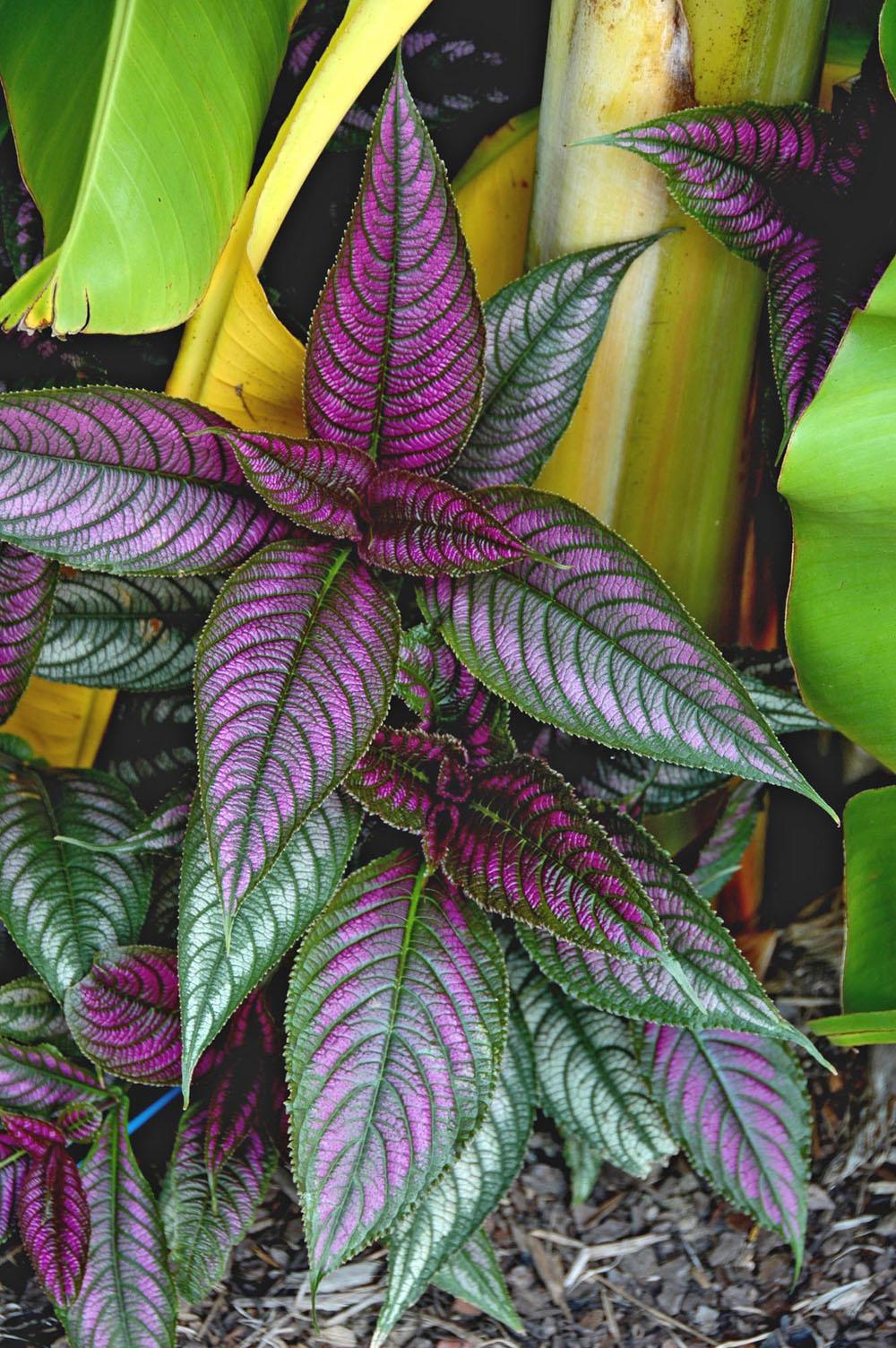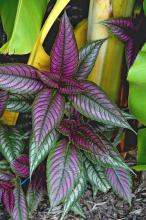Information Possibly Outdated
The information presented on this page was originally released on August 23, 2007. It may not be outdated, but please search our site for more current information. If you plan to quote or reference this information in a publication, please check with the Extension specialist or author before proceeding.
Exotic Persian Shield shines in summer heat
By Norman Winter
MSU Horticulturist
Central Mississippi Research & Extension Center
My recent stroll through the display gardens at Mississippi State University's Truck Crops Experiment Station brought a few pleasant surprises. The biggest was the Persian Shield.
Most of us get a little grumpy this time of year when the heat won't let up and rain seems to be a dream in the night. So let me cheer things up a bit by talking about a plant that is giving a knockout performance right now. The Persian Shield is one of the most beautiful and unusual plants for the garden, and it is thriving now.
Persian Shield is known botanically as Strobilanthes dyerianus. It is native to Burma and has 8-inch-long leaves that are iridescent in shades of purple, lilac and pink, with purple-maroon on the undersides. If those colors aren't awesome enough, the foliage looks like it has a light coat of silver electroplated to it.
The plant has been around since Victorian times, but it slipped in popularity until recently. The University of Georgia named it an Athens Select plant in the last few years, and this helped make it being much easier to find.
The Persian Shield prefers well-drained, organic-rich soil. I rarely see it looking its best in full sun. Plant where it will get morning sun and afternoon shade to keep its brilliant colors from developing a scorched look.
Next spring, wait to plant it until all danger of frost has passed, then space plants on 18- to 24-inch centers. The plants should reach close to 4 feet tall. Like coleus, pinching is recommended to keep plants bushy.
This is not exactly a drought-tolerant plant, but those in our display garden have endured much more than I believed possible. For best results, keep the plants uniformly moist throughout the growing season. This is a tropical plant that performs well in our heat and humidity
Keep Persian Shield growing vigorously by fertilizing monthly with a light application of a slow-release fertilizer. My choice is a 12-6-6 with minor nutrients, but other blends are fine as long as they are slow-release.
Most people would think of Persian Shield as an annual plant much like coleus. However, it is considered a perennial in zones 8-11, and ours have come back for the last four years.
You can make great combinations with the Persian Shield. The purple foliage plays off the yellow-green stalks of the large bananas in our gardens. Another great choice would be to use lilac-colored impatiens as companions, although pink also would work well. The Dazzler or Super Elfin series have several good choices for companions. The Persian Shield is ideally suited to being the center plant in a large container with companion plants.
Every week someone asks me what plants deer do not like. Reports indicate Persian Shield is one of those plants deer will leave alone.
This plant has another huge attribute: it is easy to propagate by cuttings. After you fall in love with it, you may want to take cuttings in the fall and overwinter them indoors. You also can take cuttings in late summer if the plant starts to look straggly. If you mulch it heavily in the fall, it may return in the spring, especially if you're close to the Coast.
The Persian Shield is a good choice if you are looking for an unusual plant for a tropical setting or you just want a companion for your impatiens.








